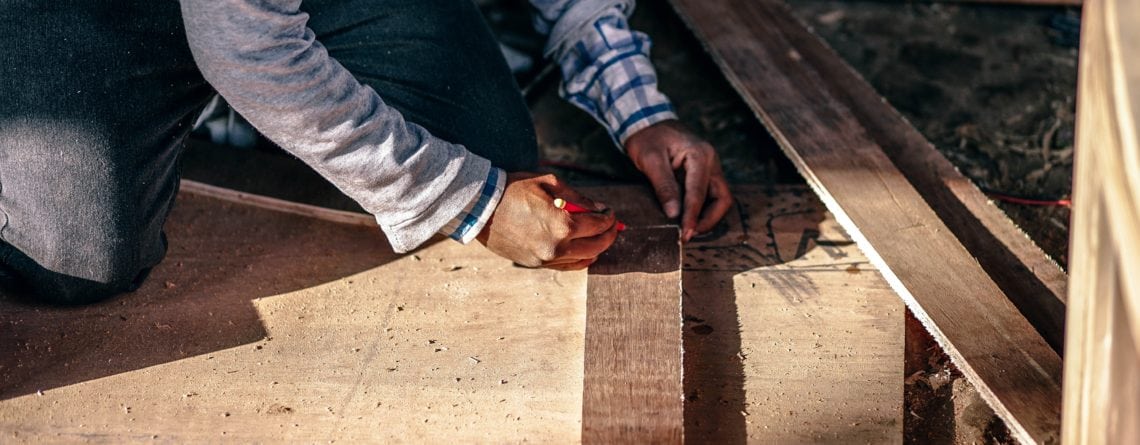Weighing Your Loan Options for New Construction Financing
Building the Right Financing Package for New Construction Loans
New construction spending is reaching all-time highs—what an exciting time to be a part of the ever-evolving real estate market. Forging ahead in both the established and emerging development markets are new mixed-use properties and multifamily builds.
As lending specialists, we’ve seen developers and investors use a myriad of tools to get their projects built. Just to name a few, funding sources can come from:
- An individual’s own cash and capital
- An investor’s equity
- Construction loans from a bank or credit union
- Life insurance companies
- HUD or FHA government-insured loans
- Private capital that comes from a non-bank
- Hard money loans, secured by assets
Most of the options above are short-term in nature for new construction projects—a means to an end, and we usually see a combination of these tactics. Developers often start with these funding types in order to begin construction on their projects.
Investors and developers who want to hold on to their multifamily projects as a source of future income and wealth creation will eventually need a permanent loan option.
Permanent financing after construction can be separated into two end games: short-term holds and long-term holds. In this blog we will define both types of construction financing and outline lending opportunities for multifamily investors who are interested in seeing projects from—literally—the ground up.
Short-term pros and cons
Virtually all lenders like to see some skin in the game when a project is first completed. All short-term hold options will consider both loan-to-cost and loan-to-value. It is rare a developer isn’t constrained by loan-to-cost, despite the equity created.
A short-term loan will begin its repayment period within one to five years after a project’s completion. Under the short-term hold umbrella, there are several loan options a developer may choose or qualify for. Each option has its own pros and cons, as outlined below.
“Mini-Perm”
When approaching a construction lender for financing, see if there is a “mini-perm” option. This is a simple way to bridge the gap between securing a construction loan and the eventual sale of the property.
Pros:
- Usually, a mini-perm is a lower-cost option.
- You can use the same lender from where you acquire your construction financing.
- There is minimal paperwork and underwriting.
- The prepayment penalty is minimal.
Cons:
- The construction loan amount remains the same, meaning there is no increase in leverage.
- It is beholden to the interest rate of the lending institution.
- Mini-perms are typically recourse loans.
Bank Loan
With a traditional bank loan, shop and explore options with multiple banks and credit unions for a three to five-year deal.
Pros:
- Prepayment penalties are potentially soft.
- You have the ability to increase leverage, unlike in a mini-perm loan.
- The terms are generally more favorable than those of a mini-perm.
Cons:
- In order to qualify, a full financial review is necessary—which means you won’t be able to secure funding as quickly as with other options.
- Full occupancy is required to achieve maximum leverage.
- Prepayment penalties can be significant.
Agency Loan
Like in a single-family or regular multifamily purchase, taking out a construction loan with a Fannie Mae or Freddie Mac loan is also possible.
Pros:
- An agency loan will allow maximum leverage if property is at full occupancy.
- These loans are non-recourse.
- Five-year terms and 30-year amortization rates are available.
- Interest rates are attractive.
Cons:
- Prepayment penalties can be stronger than with other loan options.
- Full occupancy is required to achieve maximum leverage.
Life Co-Loan
Investors and developers looking for new construction financing may approach life insurance companies for funding.
Pros:
- Interest rates are low with the ability to lock in a rate early.
- There is flexibility for terms and prepayment.
- A 30-year amortization rate is available.
Cons:
- Lower leverage for best rates and terms.
- Life insurance companies are selective about loan size and the location of the properties they finance.
Understanding the pros and cons of various short-term loan options will allow you to strategize the best route to take for your new multifamily development. However, in some cases and for some investors, a long-term funding package may be a better option to bridge the gap for permanent financing.
Long-term financing solutions
Before you begin construction on your new multifamily project, you should know whether you plan on selling the development or the individual units, or if you plan on holding on to the property.
If you do want to keep the investment property, you should know for how long you want to keep it. There are a few long-term financing options if you plan on holding the property for ten years or more.
Even looking through a long-term lens, most of the short-term strategies and loan options listed above are in play. The Fannie Mae and Freddie Mac agency loans and life insurance company loans can be structured in a way that extends their terms and fixed rates to ten to twenty years with 30-year amortizations.
For a long-term hold, the most common term is the ten-year deal because it is at an equilibrium point with both a low rate and a long-term fixed rate.
For the long-term hold investor, a HUD loan is a compelling option. After three years of ownership (after a certificate of occupancy), HUD allows a full refinance based on the value of the property at that time. Assuming the debt coverage ratio (DSCR) allows it, an owner can maximize their cash out at this point.
At Bonneville, we can do an 80% loan-to-value (LTV) with a HUD loan. This typically allows the developer to pull all of their cash out at this point. The rate will be locked for 35 years, and a 35-year term and amortization means never having to refinance again.
Most often, multifamily investors and developers will combine a short-term strategy with a HUD loan. When you know your options—and there are lots of them—you are able to find the right fit for you and your deal.
We at Bonneville pride ourselves on not only having a variety of options available for our clients, but also assisting them in finding the ideal fit with their financing. Our goal is always to provide the optimal structure for our clients based on their goals and expectations.
No matter your experience in the real estate investment market, we can help you navigate all the opportunities that new construction multifamily developments can afford.






